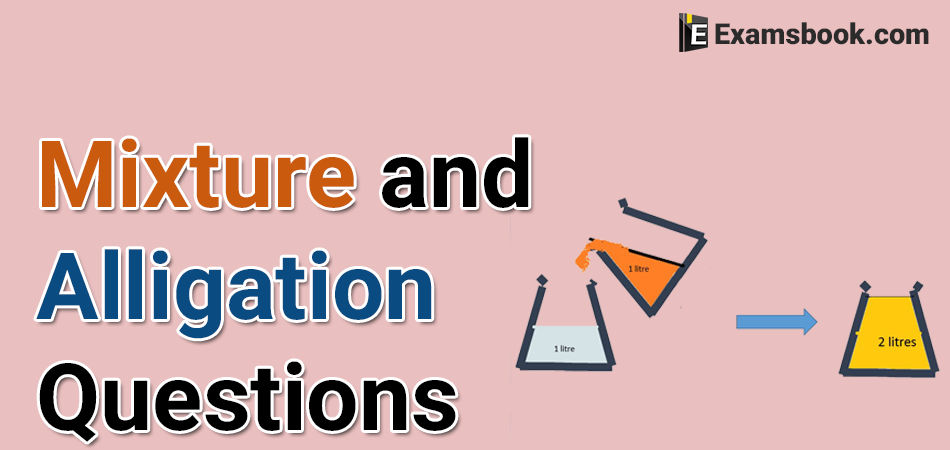Mixture and Alligation Questions for SSC and Bank Exams

A can contains a mixture of two liquids A and B in the ratio 7:5. When 9 litres of mixture are drained off and the Can is filled with B, the ratio of A and B becomes 7:9. How many litres of liquid A was contained by the Can initially?
(A) 10
(B) 21
(C) 20
(D) 25
Correct Answer : B
Rahul purchased two different kinds of alcohol. In the first mixture the ratio of alcohol to water is 3:4 and in the second mixture it is 5:6. If he mixes the two given mixture and makes a third mixture of 18 litres in which the ratio of alcohol to water is 4:5, the quantity of first mixture (whose ratio is 3:4) is required to make the 18 litres of the third kind of mixture is:
(A) 5
(B) 9
(C) 6
(D) 7
Correct Answer : D
Three vessels whose capacities are in the ratio of 3: 2: 1 are completely filled with milk mixed with water. The ratio of milk and water in the mixture of vessels are 5: 2, 4: 1 and 4: 1 respectively. Taking 1/3 of first, 1/2 of second and 1/7 of third mixtures, a new mixture kept in new vessel is prepared. The percentage of water in the new mixture is
(A) 30
(B) 24
(C) 32
(D) 28
Correct Answer : B
In what ratio must a mixture of 30 % alcohol strength be mixed with that of 50 % alcohol strength so as to get a mixture of 45 % alcohol strength?
(A) 2 : 1
(B) 3 : 1
(C) 1 : 2
(D) 1 : 3
Correct Answer : D
In an alloy, the ratio of copper and zinc is 5 : 2. If 1.250 kg of zinc is mixed in 17 kg 500 g of alloy, then the ratio of copper and zinc will be
(A) 3 : 2
(B) 1 : 2
(C) 2 : 1
(D) 2 : 3
Correct Answer : C
If you face any problems in mixture and alligation questions, you can ask me in the comment section.



